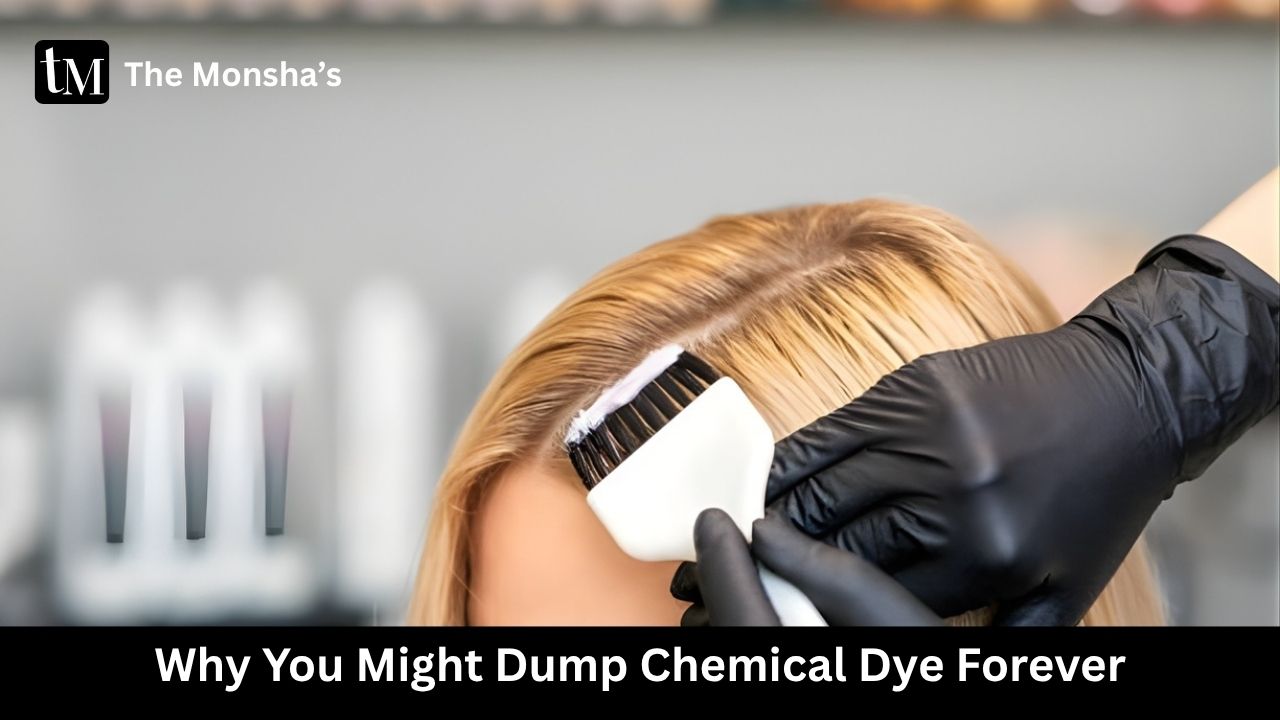
“Rang barse... lekin ammonia waale nahi!” 💃
Listen, I love a good hair transformation. But if your scalp’s flaring up, hair’s feeling straw-like, and the colour fades faster than your last Hinge match—maybe it's time to rethink those chemical-laced box dyes.
Natural hair dyes don’t just colour. They condition. They nourish. And they don’t come with a PhD in reading labels. If you’re dealing with:
Then maybe, just maybe, you’re ready to go natural.
Natural hair dye is no longer your dadi-nani ke zamane ka orange henna horror. Today, with ingredients like henna, indigo, coffee, hibiscus, beetroot and even tea—you can actually get beautiful, rich, chemical-free hair colour at home. 💁♀️ From greys to glow-up browns, this guide breaks down every method, recipe, and hack to help you go au-naturel—without frying your strands or booking a salon sesh. Bonus? All this comes with a desi tadka and a side of witty sass.
No, not everything that says “herbal” is truly clean. A lot of store-bought “natural” hair colour kits still contain metallic salts or PPD (a known allergen). A true natural hair dye:
And bonus: most DIY ingredients double up as hair treatments too. Henna strengthens. Coffee adds shine. Hibiscus helps with dandruff. It’s basically a 2-for-1 deal. 💁♀️
Before you dive headfirst into your beetroot fantasy, test the mix. Here’s the drill:

Don't underestimate haldi or curry leaves either—those desi kitchen heroes are coming for your roots (literally).
👉 Result: Copper to deep auburn, depending on your natural shade. On greys, this gives a vibrant glow.
This is a two-step process.
Step 1 – Henna layer: Apply henna mix like above and rinse.Step 2 – Indigo mix:
👉 Result: Dark brown to black coverage. Great for grey roots and mature hair.
Ingredients:
Boil chamomile in water, let it cool. Add lemon juice. Spray onto hair and sit in sunlight for 30 mins.
👉 Result: Natural sun-kissed highlights for brown-blonde shades.
👉 Adds deep brown richness and shine—perfect before a wedding or date night.
Your colour will gently fade over 3–6 weeks, depending on your routine. And honestly, the faded tone is chef’s kiss too.
Too orange? You skipped the indigo step or left it on too long.Too dark? It’ll fade—don’t panic shampoo.Didn’t cover greys? You may need two rounds or a stronger henna base.Patchy finish? You didn’t section or saturate well.
Pro tip: It’s okay to mess up. Even salons do. Dye another day. 😉
If you’ve:
Then babe, DIY might disappoint. Book a professional session—or consider semi-natural hybrid formulas. Better safe than sobbing in your bathroom mirror with green streaks.
Too tired for full-blown DIY? Here’s a minimalist start:
You’ll get a warm glow + strength booster in one go. Easy peasy. 🥱
Anywhere from 3 to 6 weeks, depending on how often you shampoo and your hair type.
Yes, but test first. Henna can react weirdly on bleached hair.
Absolutely—especially the henna + indigo method. You may need two coats for stubborn greys.
Yes! Coffee deepens the tone and reduces brassiness.
Every 3–4 weeks for roots. But even once a month is enough for full-head coverage.
Look, natural hair dyeing is messy, time-consuming, and smells like earthy tea most days. But it’s worth every minute when your strands feel soft, rich, and you know you didn’t fry your scalp doing it.
Jaane kyun... log henna lagate hain! 😜
Loved this guide? Share it with your DIY diva squad or tag us post-glow-up. Aur haan—comment below your fav henna blend. Let's get mixy! 💬✨